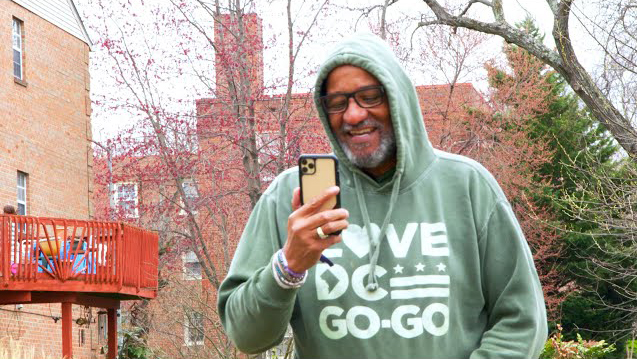Aligning Care to Patient Goals: Lamont's Story
Aligning Care to Patient Goals: Lamont’s Story
‘That was the difference:’ Retired D.C. chef credits doctor with helping him avoid medication after high A1C level
Publish September 24, 2024
Lamont Mitchell knew he was at risk for developing diabetes after warnings from doctors and watching his own father inject himself with insulin for years.
Still, the April 2021 diagnosis came as a shock.
“I will never forget the day,” Mitchell said, when he learned his A1C level, which measures blood sugar, had doubled, and he was at risk for full-blown diabetes. But instead of a typical, 15-minute appointment with his doctor, he had over an hour to discuss the results, as well as his health and family history, his goals, and a range of options to help him manage the condition.
“That was the difference,” Mitchell said. “Most doctors have a limited amount of time with you, and it’s easier for them to prescribe a medication to deal with the issues and you move on and they go to the next patient.”
Mitchell, 67, a lifetime Washington, D.C. resident, received his diagnosis at Bluerock Care, a health clinic established in 2021 that participates in a Centers for Medicare and Medicaid Services Innovation Center model. The Accountable Care Organization Realizing Equity, Access, and Community Health (ACO REACH) Model is a pilot program that rewards providers based on patients’ quality of care, rather than volume of services, which is a hallmark of a traditional fee-for-service payment system.
The practice is reimbursed based on improvements to a patient’s health, and is less focused on maximizing the number of patients its physicians see in a day, or the quantity of routine, and often medically unnecessary tests and procedures it performs, its founder says.
Bluerock primarily serves Medicare patients in an underserved community that lacks primary care providers. Many Bluerock patients suffer from chronic diseases like diabetes, heart disease and high blood pressure. Some struggle to make it into the office, but Bluerock is able to make home visits, waive copays and provide funds for transportation to encourage patients to visit with providers and work towards improving their health.
“What this model does is it allows you to invest in better care, and pays you for making people healthier,” said Marc Berg, CEO of Bluerock Care. “ACO REACH helps you be rewarded for actually doing the right thing, as a practice, as a physician, as a provider.”
That means the medical staff has more flexibility and can spend more one-on-one time with patients, or follow up on how the patient is managing their care, as needed.
“It creates an immediate, different kind of connection with the patient.” In patient surveys, he said, common feedback is, “we have never had a doctor actually listen to us.”
For Dr. Alka Gupta, Bluerock’s clinic chief medical officer and Mitchell’s primary care doctor, the accountable care structure provides a better connection with her patients.
“I think being part of an [Accountable Care Organization] allows us to practice medicine in a much more rewarding and fulfilling way,” she said. She has more time with her patients to help them understand what factors might be contributing to their health.
In traditional primary care practices, she said some doctors can get stuck in a pattern of seeing higher numbers of patients, and try to get too much accomplished at one time.
“The key to Lamont’s success is we were actually able to spend time with him. During the first and second visit, we were able to make sure he understands what leads to diabetes and figure out what his goals are and figure out what he’s willing to do.” In other practices, they might have taken a more algorithmic approach and started him on medications, she said.
“We were able to work within his philosophy, and his values,” Gupta said.
Mitchell believes he would not have received the same level of care elsewhere, and believes he would’ve been prescribed medications right away, which he wanted to avoid.
“It was refreshing,” he said. To hear, “let’s try this and see if it works. I am with you and I will partner with you on this approach,” he said.
Since his diagnosis, Mitchell, a retired chef and caterer has drastically improved his diet, focusing on plant-based meals, and has regularly walked 10,000 steps a day. His A1C dropped.
He has also inspired others through a walking group in his Southeast, Washington D.C. community. During long walks through the neighborhood, or at the mall when it’s hot, he will get on a Facebook Live broadcast and inspire others to get out and move. His walking group—Team Imani—has more than 130 members. He has had chefs and others, including Dr. Gupta, appear on Facebook with him to talk about diet and fitness to keep others motivated.
Mitchell acknowledges that his path to manage his condition isn’t for everyone, but he said it’s important for patients to feel empowered to make decisions about their care.
“I think I am a partner in my healthcare and I work with doctors,” he said. “I listen to their opinion, but at the end of the day, if we are invested in our own healthcare and take some ownership of it, we can manage it together.”
